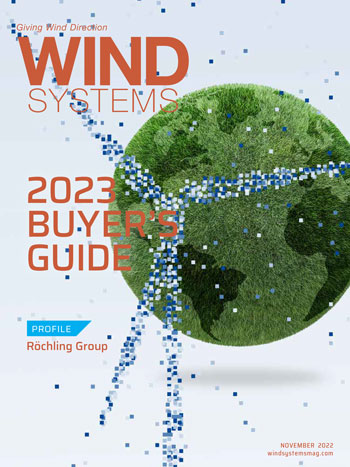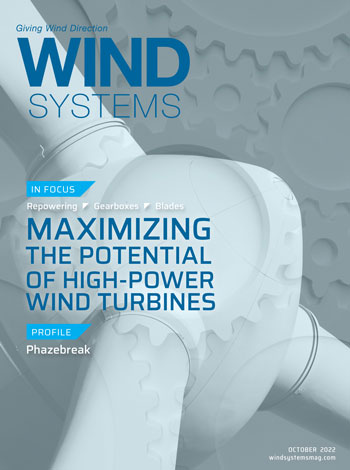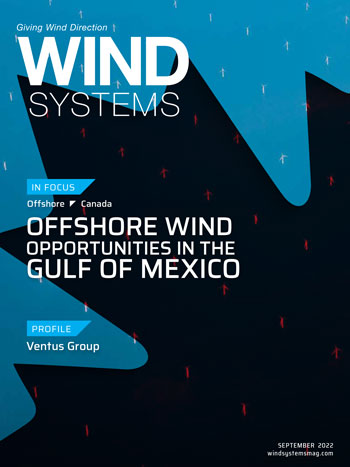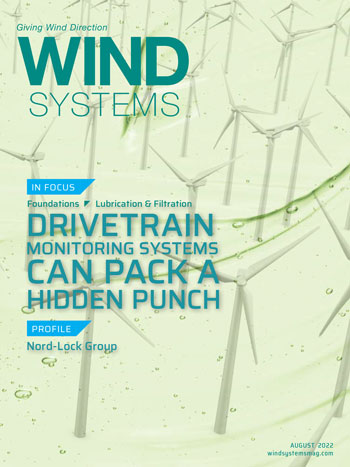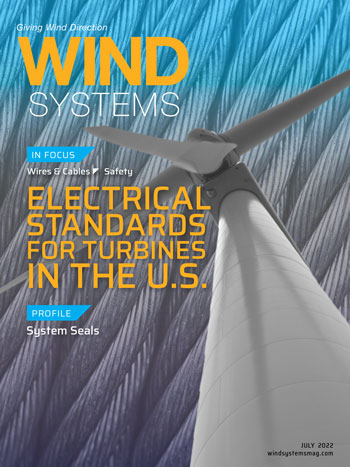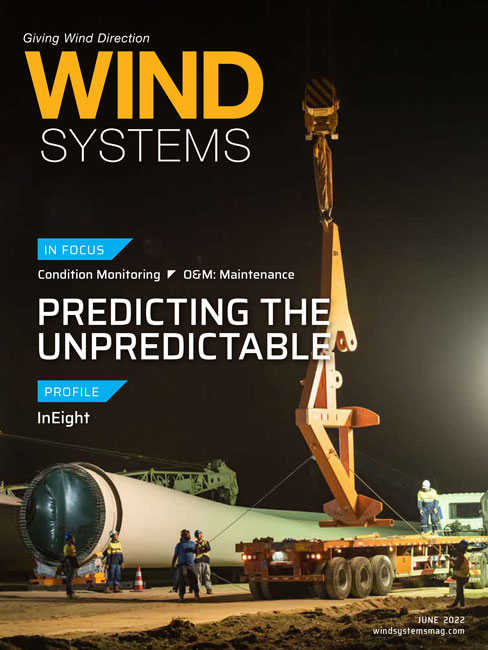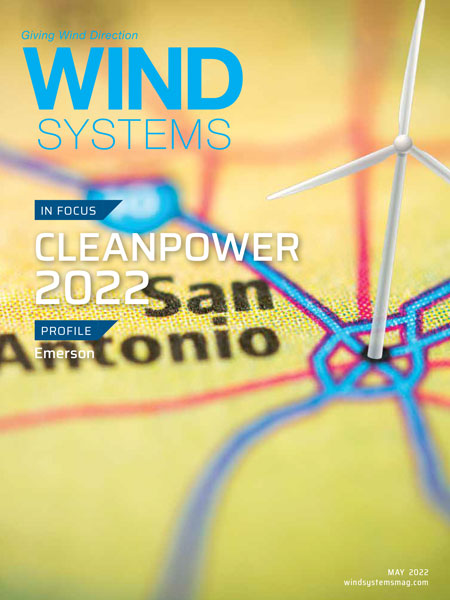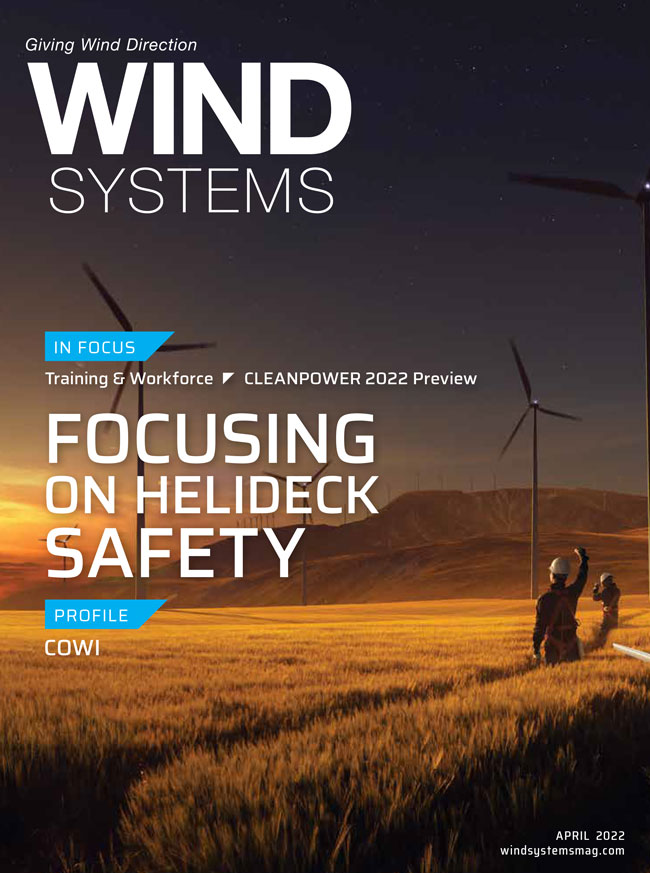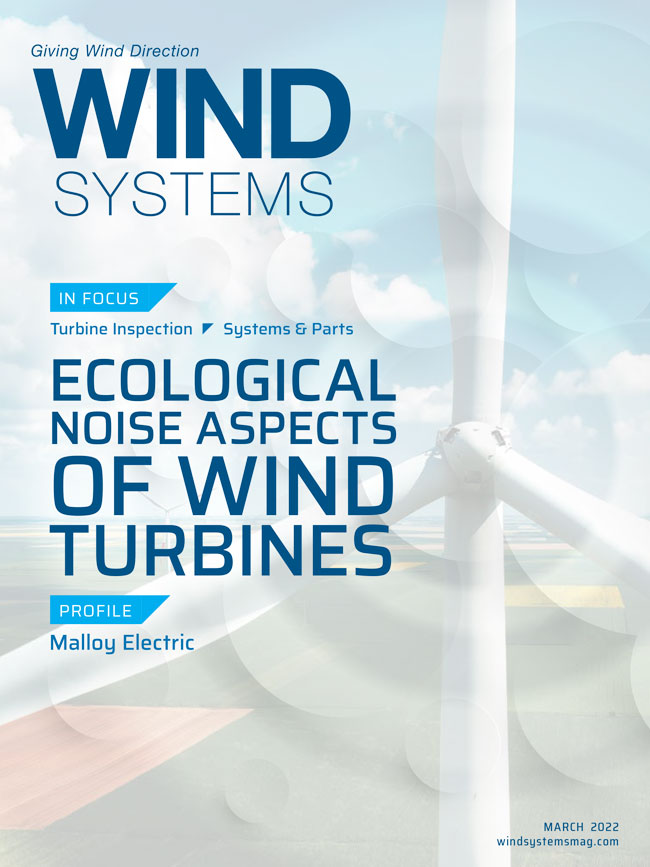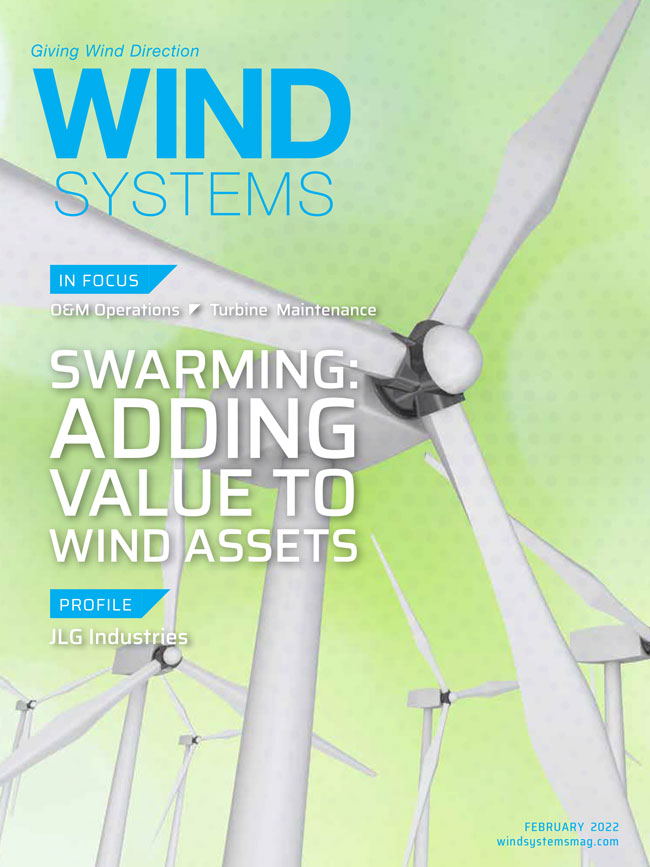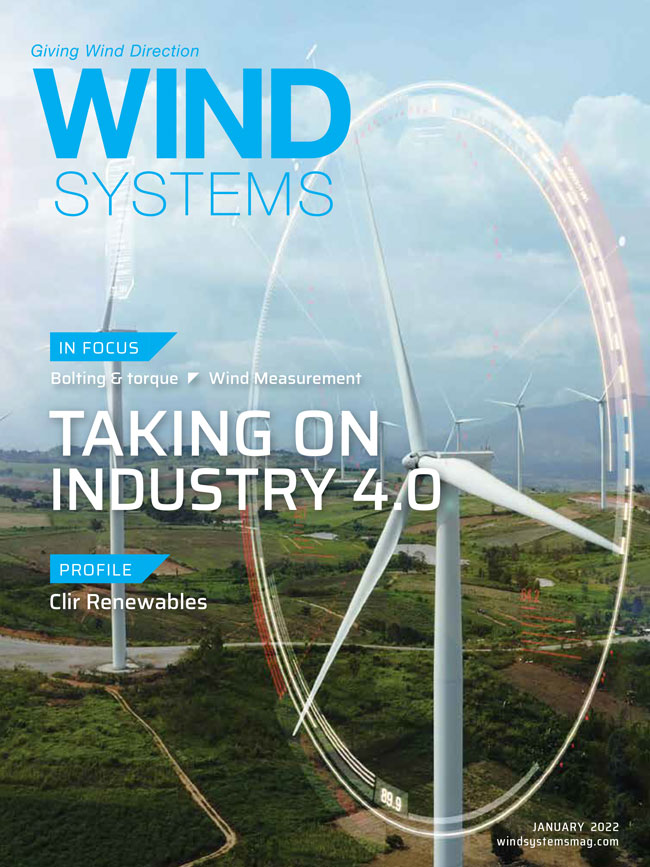December 2022
Case Studies: Transportation Challenges
Whether it’s moving massive parts for onshore or offshore wind projects, transporting equipment to its final destination involves precision work and planning.
Building Wind, Building a Workforce
The renewables industry must look in new places to fill growing skills gap.
By Mikkel Lund
October 2022
Maximizing the Potential of High-Power Wind Turbines
With rigorous investment and innovation under way to make offshore wind turbines larger and more powerful, MV converter technology will play a key role as wind-turbine power increases.
Case Study: Wind Turbine DFIG Generator Slip Ring Defect
This case study shows how, in time, detection of slip ring defects could result in fast and non-expensive repairs.
September 2022
Tackling Tough Net-Zero Goals
Canada is once again experiencing renewables growth, but the country still has a lot of work to do to meet set emissions reduction targets.
U.S. Offshore Ambitions Hinge on Supply Chain
With the proper planning and by incorporating some of the best experience from European models, the U.S. should be able to roll out robust offshore wind development.
Offshore wind opportunities in the Gulf of Mexico
Despite what is understood as the limited “wind to grid” capacity in the Gulf of Mexico, the footprint of the region has generated interest in using that relatively expansive geographic scope for various potential wind projects.
August 2022
Protecting equipment from harsh environments
An industrial-grade corrosion inhibitor and cleaner prevents rust and electrolysis while improving electrical function in wind-energy components.
How drivetrain monitoring systems can pack a hidden punch
With their existing drivetrain monitoring systems, wind-farm owner-operators can now access insights on the health of turbine foundations.
July 2022
Increasing safety in the workplace
Proper safety measures and training are critical to the advancement of the wind- and renewable-energy industries.
UL 6141/UL 6142: Electrical standards for turbines in the U.S.
Retrofitting legacy wind turbines and maintaining current capacity with UL-listed products ensures that your systems comply with today’s safety standards regulating the North American market.
June 2022
Predicting the unpredictable
Operating wind turbines with a condition monitoring solution equipped with the latest technologies and software enables non-visible existing and emerging faults to be identified earlier in the failure curve.
Adding Intelligence to Your Tool Boxes and Cribs
Talking tool boxes that alert you when a tool hasn’t been properly returned – tool boxes and cribs are doing this, and much more, all in an effort to reduce tool loss on wind farms.
Keeping tabs on the transformer
A reliable condition monitoring system can ensure that the electrical bushings – which are at a high risk of exposure – and other key elements are closely watched to avoid the sudden failure of the transformer.
May 2022
Wind industry powers forward despite delays, disruptions
While disruptions and delays kept the U.S. wind market from meeting expectations, 2021 still neared records as federal and state leaders helped offshore wind to finally take off.
New construction methods for offshore foundations and towers
New wind farms 50 to 100 miles offshore will be supported by either semi-submersible or spar-buoy floating foundations. These foundations and towers, supporting the wind-turbine generator’s nacelle and blades, incorporate new construction methods and materials resulting in lifespans measured in millennia rather than decades or centuries.
How weather-decision support improves safety and reduces risk
Understanding and managing the weather is the key to safe and successful offshore wind projects.
April 2022
Focusing on helideck safety
New offshore wind-farm technologies can ensure that helicopter crews get to and from a site safely.
Getting wind of an opportunity
Massachusetts Maritime Academy partners with Building Pathways South to introduce offshore wind to pre-apprentice participants.
March 2022
Ecological noise aspects of wind turbines
When looking for a wind-turbine site, it’s important to make sure environmental factors such as noise are considered.
Constructing a drag-based wind turbine
This article displays in detail the main stages needed to develop, manufacture, and install a Lenz vertical axis wind turbine.
A safer way to look inside the blade
Internal wind-turbine blade inspection using an innovative drone technology can cut inspection time in half, allowing 40 percent more of the blade to be inspected.
February 2022
Swarming: Adding Value to Wind Assets
The key to unlocking the potential of existing and new wind assets is to connect the dots and ensure turbines are sharing and acting on crucial data streams to operate for the benefit of the entire wind farm.
Increasing bearing capacity at onshore wind farms
While new wind-farm construction is vital for the transition to sustainable energy, the maintenance and upgrade of existing facilities will play an increasingly important role in renewable energy delivery.
Avoiding Catastrophe
It’s important that operator-owners take fire risk assessments seriously in the global wind industry.
January 2022
Investigating offshore methodology
A new approach for a short-term wind speed model could optimize the design of offshore wind turbines.
The wind at your back
It’s important to tackle turbine downtime and lost energy to counter wind resource volatility.
Taking on Industry 4.0
As the wind industry embraces the importance of Industry 4.0, it becomes more important that the available tools are capable of communicating across multiple platforms.
















